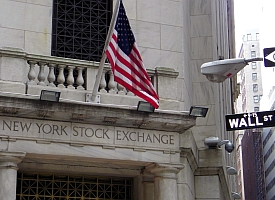Statisticians in the U.S. and France have devised a mathematical model that they say can detect asset bubbles, such as vastly over-valued stocks, in real time. Robert Jarrow of Cornell University and risk management company Kamakura Corp. in Honolulu, Younes Kchia at Ecole Polytechnique in Paris, and Philip Protter of Columbia University published their findings last month in the SIAM Journal on Financial Mathematics, a publication of the Society for Industrial and Applied Mathematics.
The authors focus on the an asset’s price volatility, which in the case of financial bubbles is very high. The authors gauge that volatility by first applying current estimators to real-time tick price data — the routine upward or downward movement in the price of a security — for a given stock. They then extended the data for large values using an extrapolation technique called Reproducing Kernel Hilbert Spaces (RKHS), where they information is not available from the tick data.
Protter says with the RKHS extrapolation technique, often used in mathematical finance, “one can check the rate of increase of the volatility function as the asset price gets arbitrarily large.” Protter adds, “Whether or not there is a bubble depends on how fast this increase occurs.” If the asset price does not increase fast enough, there is no bubble according to the model’s framework.
The authors tested their methodology on several stocks from the dot-com bubble from 1998 to 2001: Lastminute,com, Infospace, Geocities, and eToys. Their tests showed bubbles occurring with Lastminute.com and Infospace, no bubble in the Geocities stock, and indications of a bubble for eToys, but not solid enough findings to be conclusive.
Protter says the authors also tested the model on more recent asset price increases. “We have found, for example, that the IPO of LinkedIn underwent bubble pricing at its debut,” notes Protter, but “the recent rise in gold prices was not a bubble, according to our models.”
* * *


 RSS - Posts
RSS - Posts
You must be logged in to post a comment.